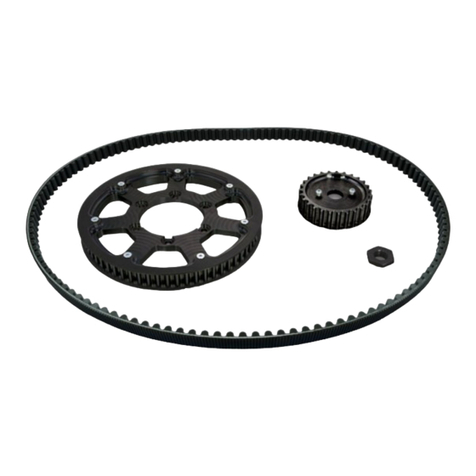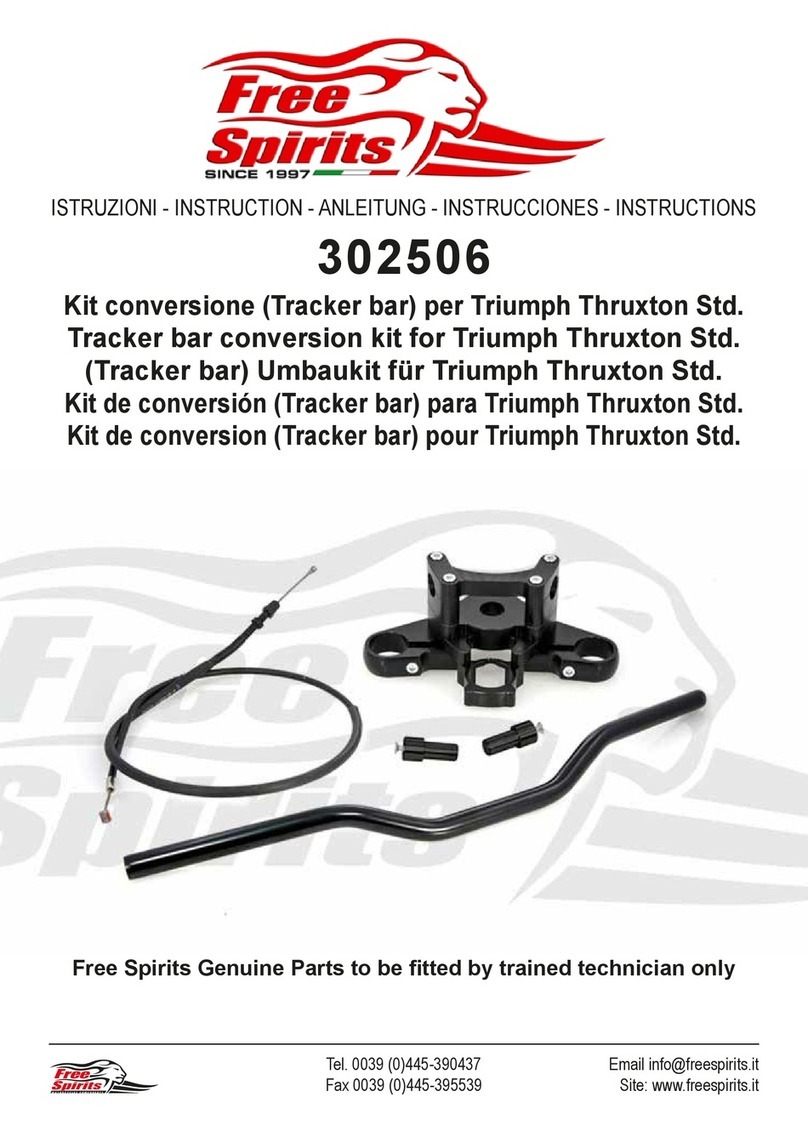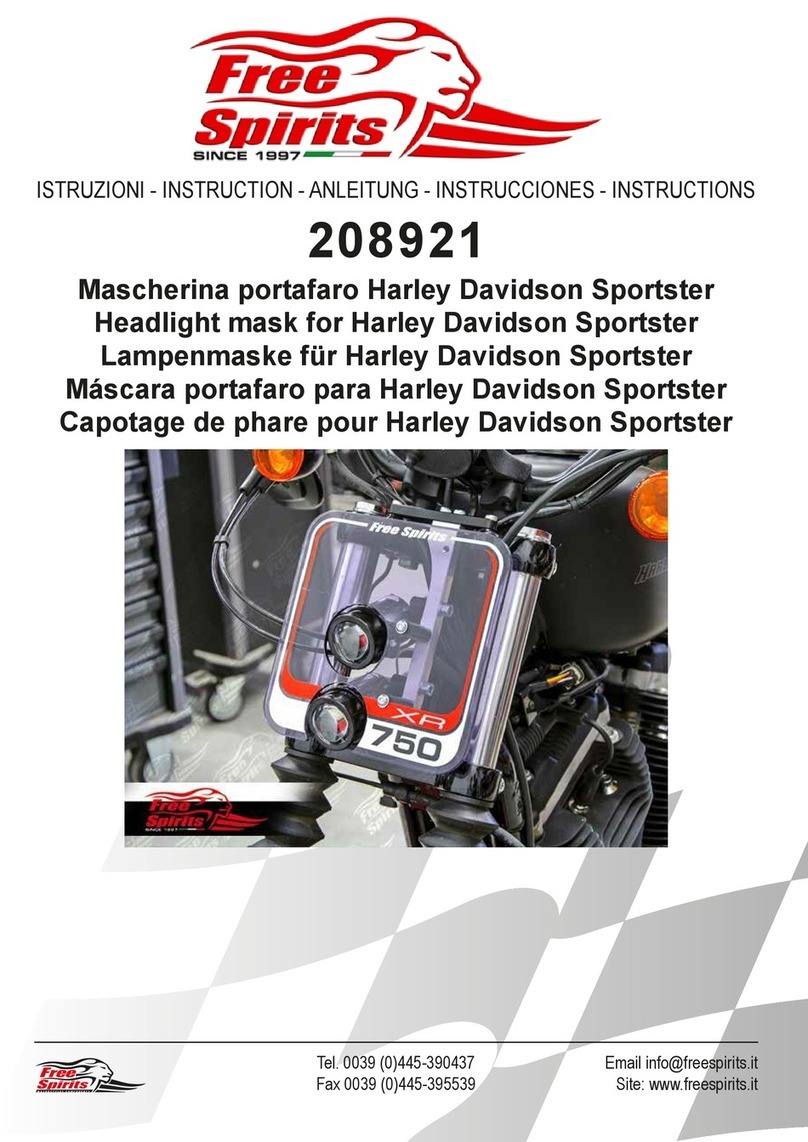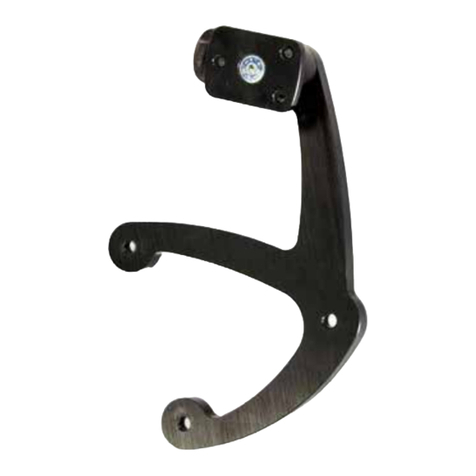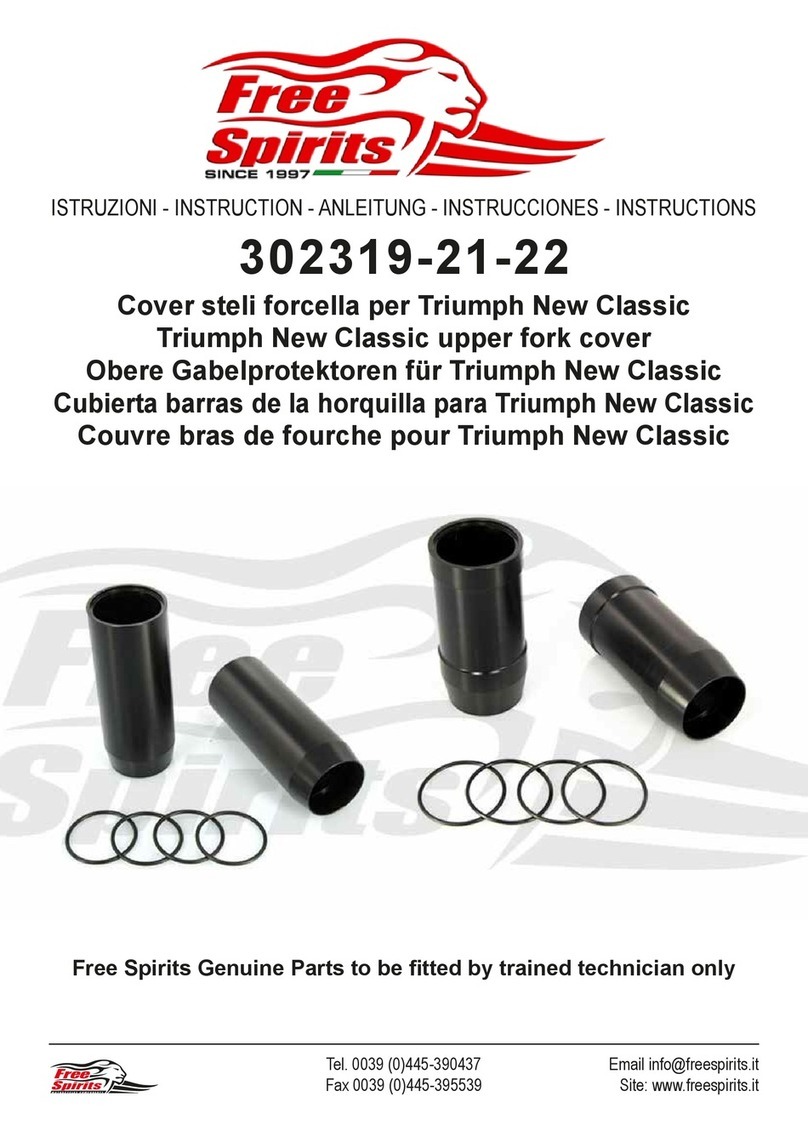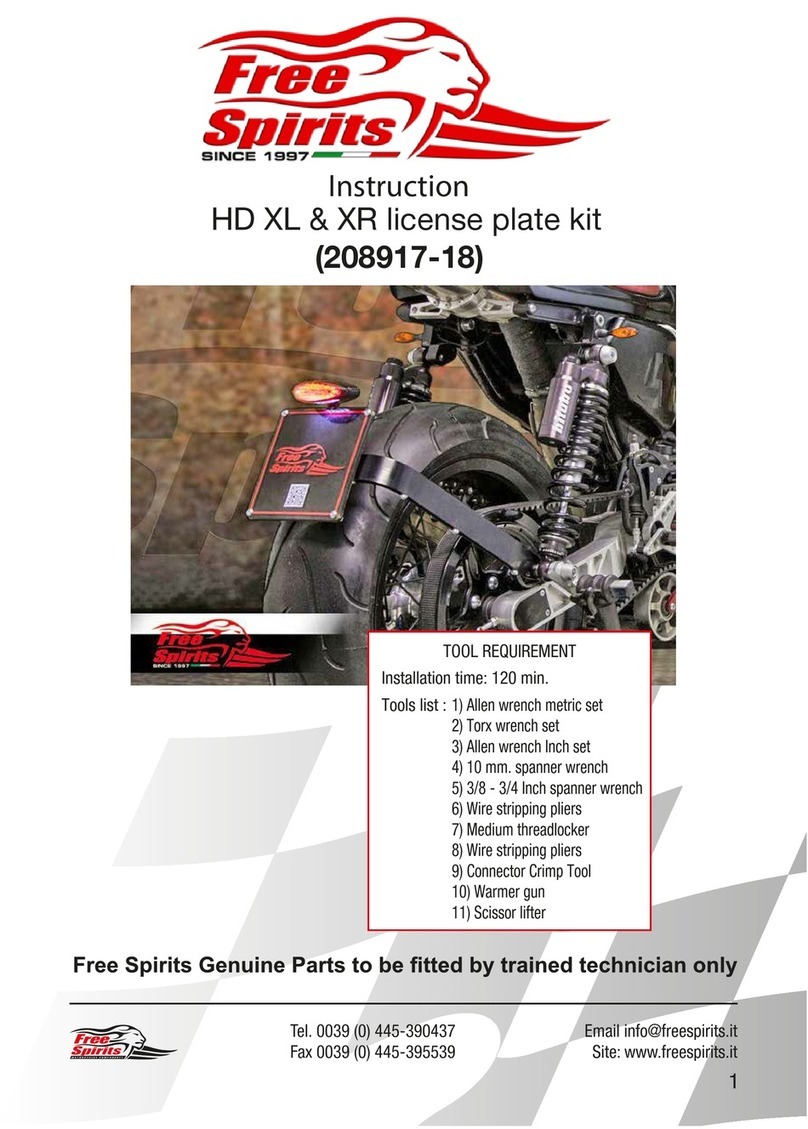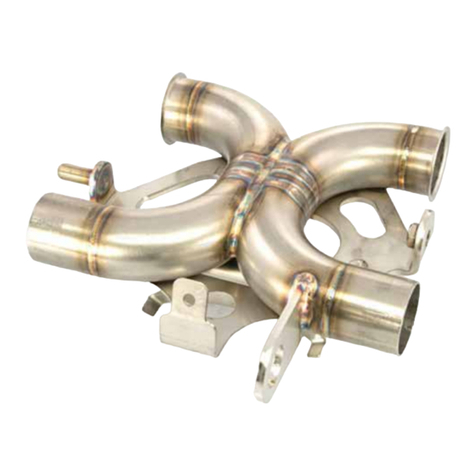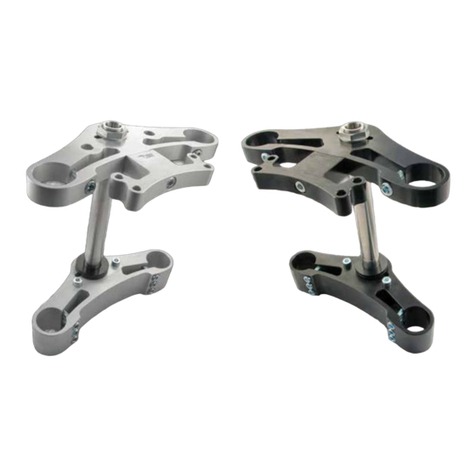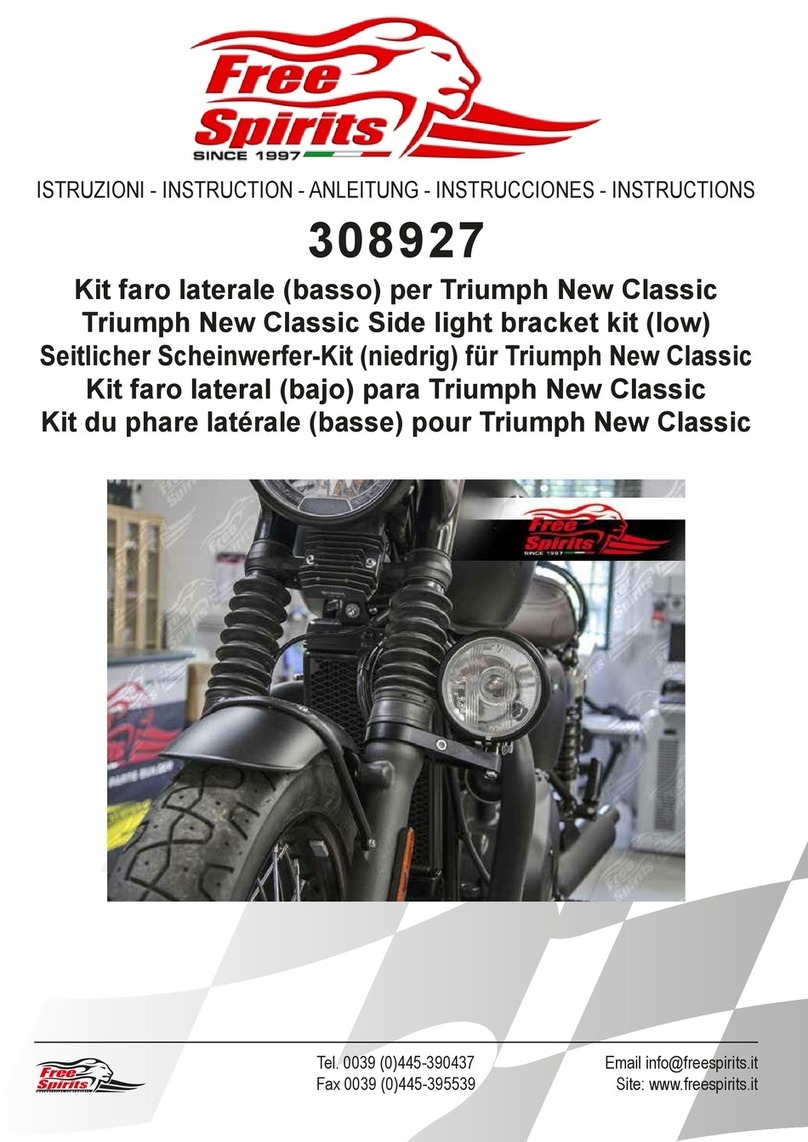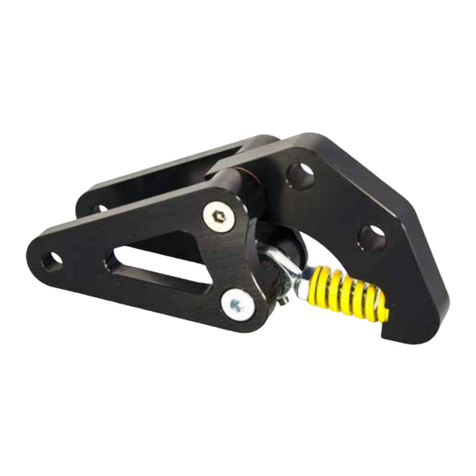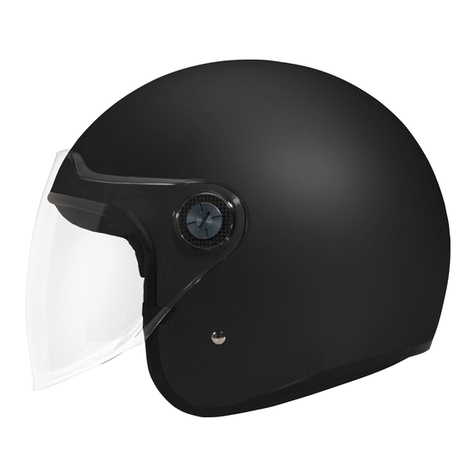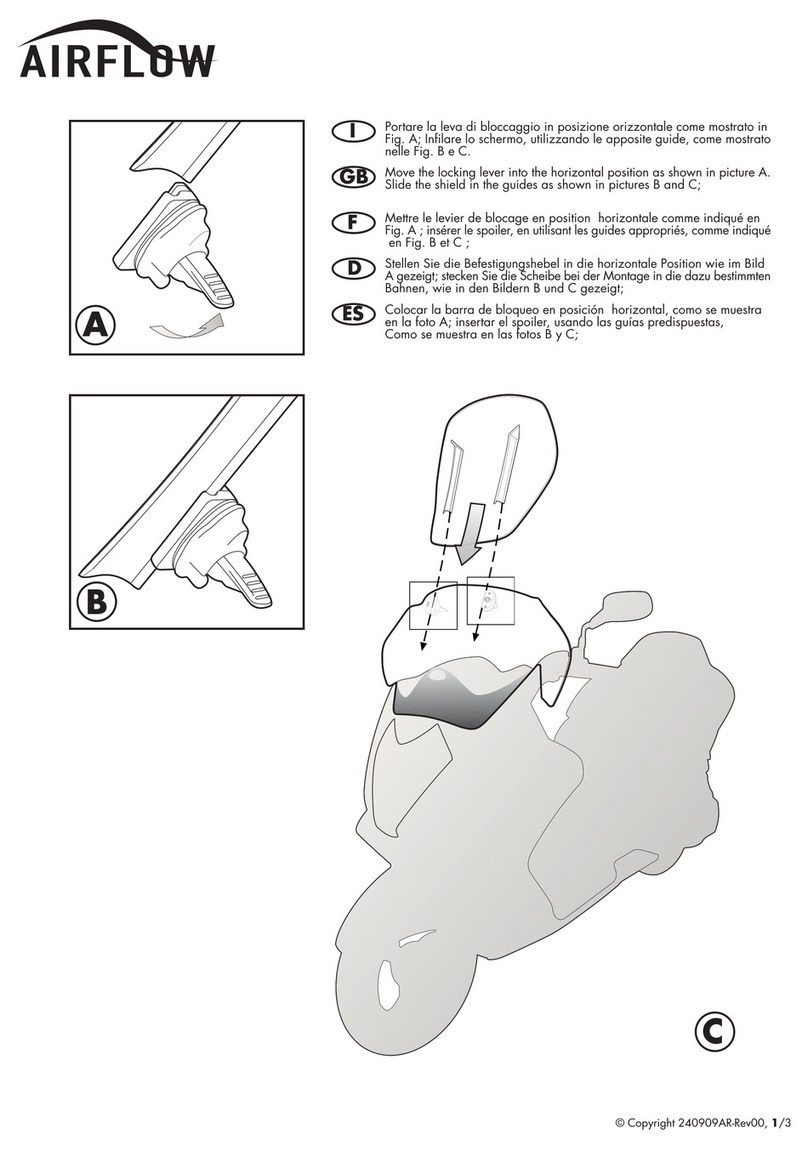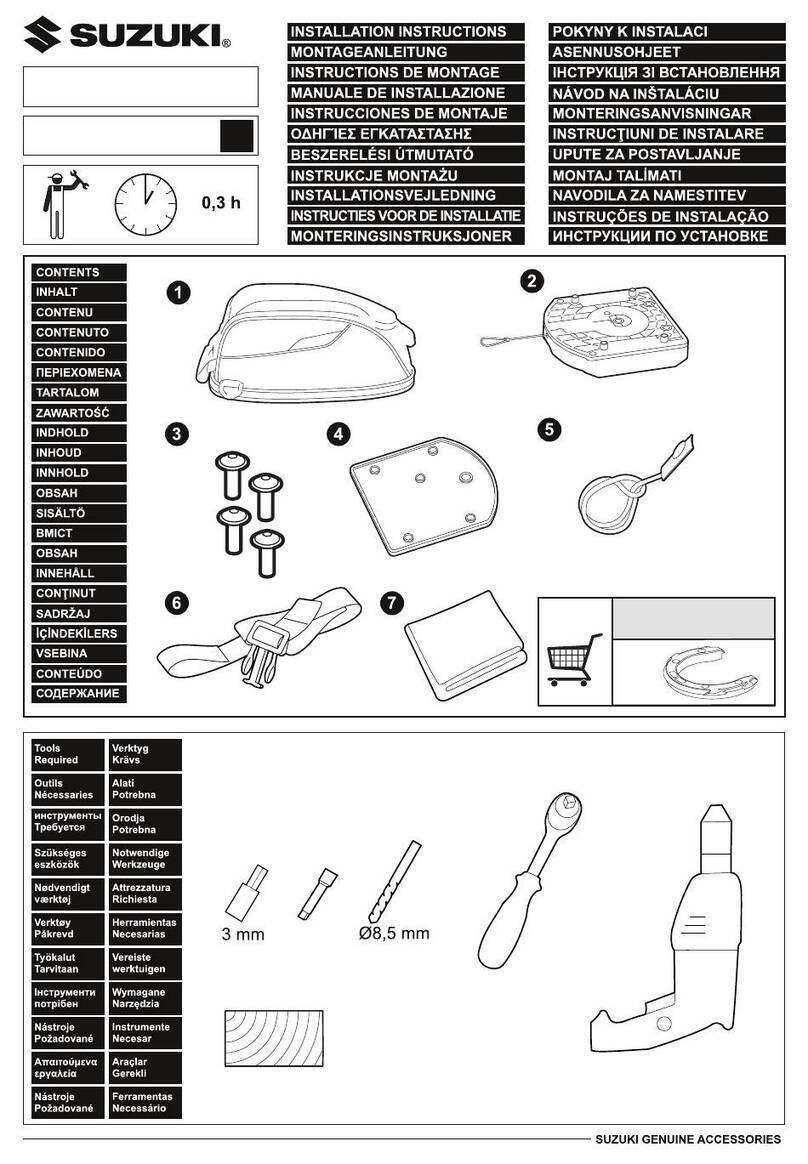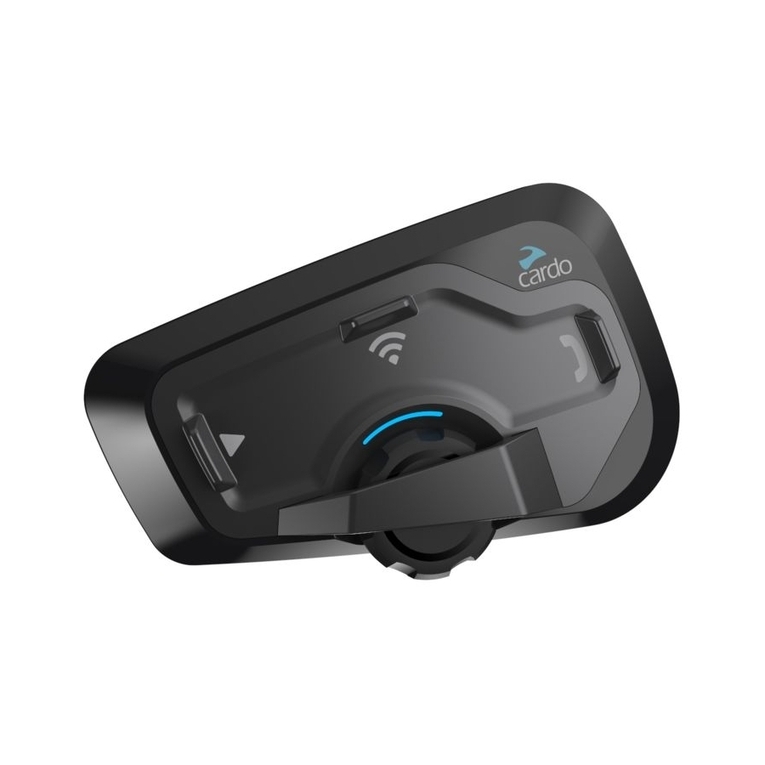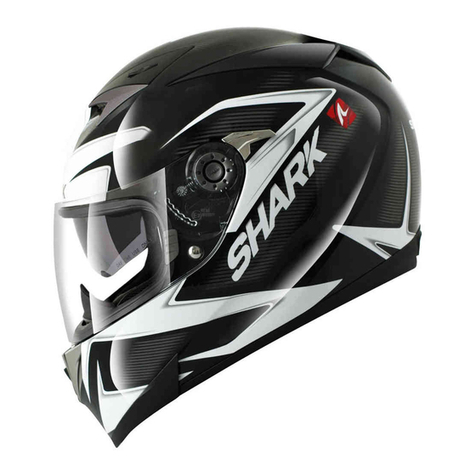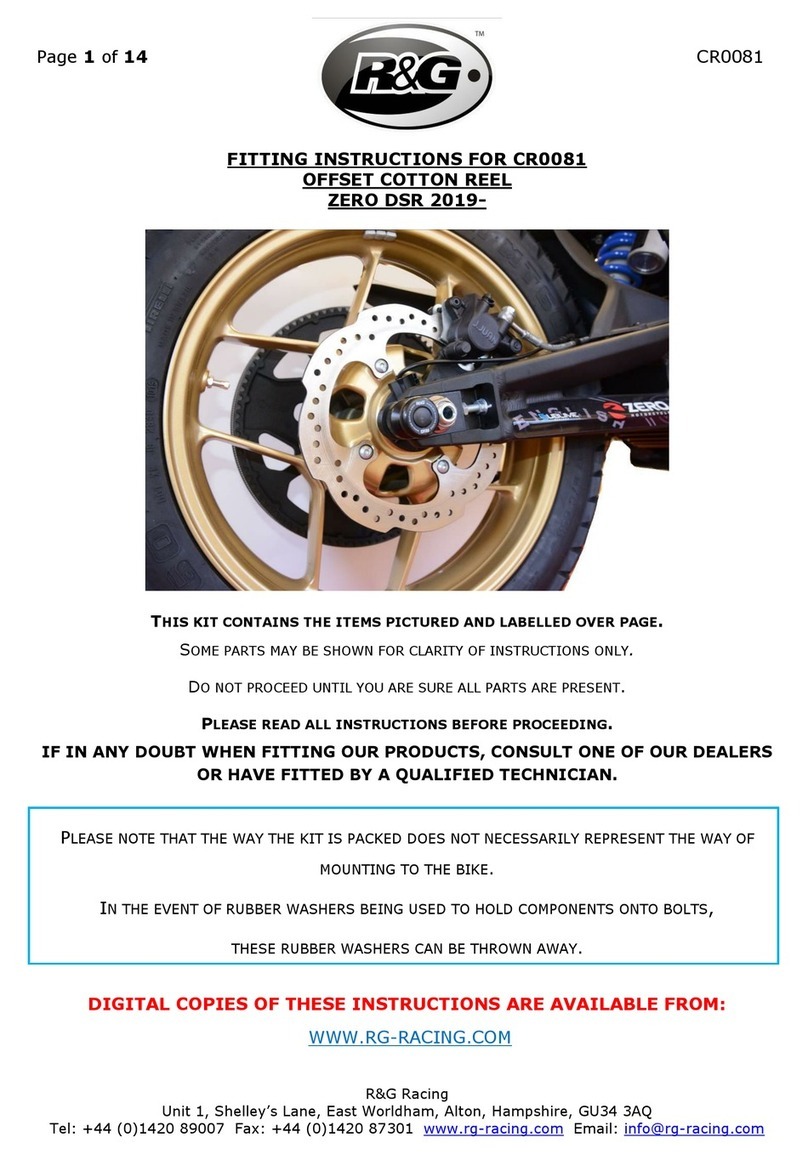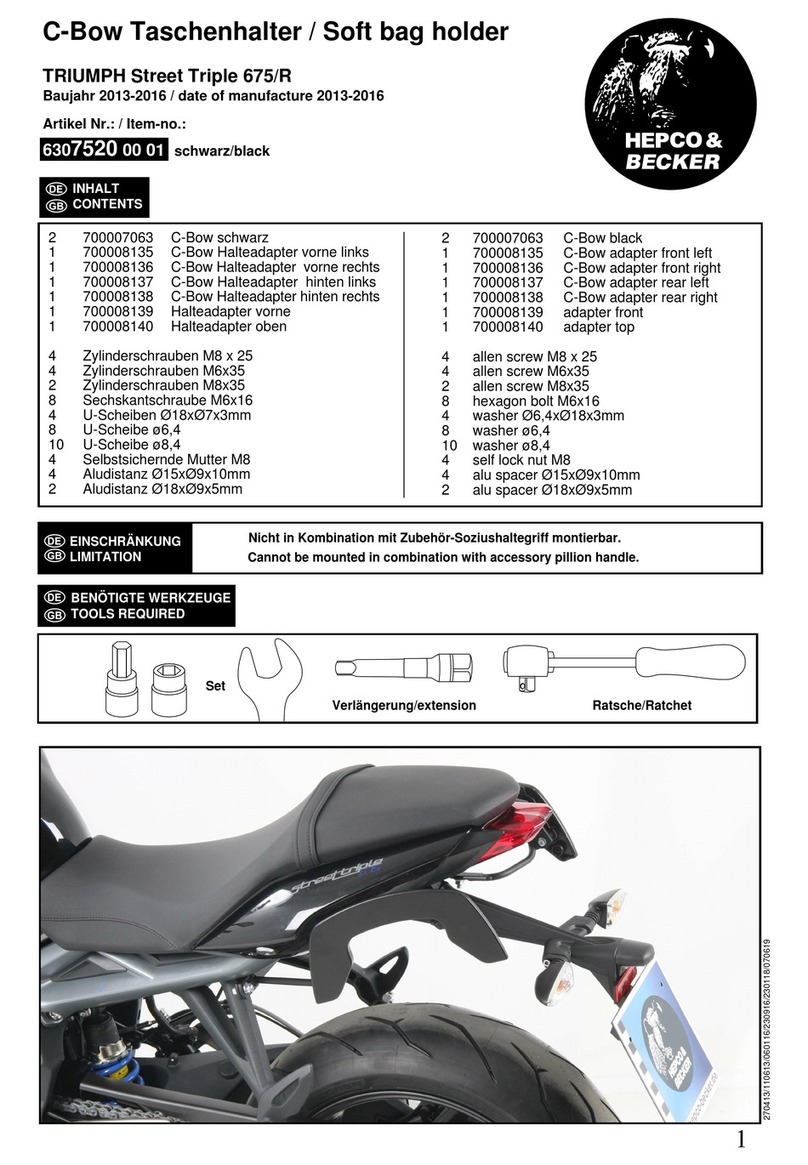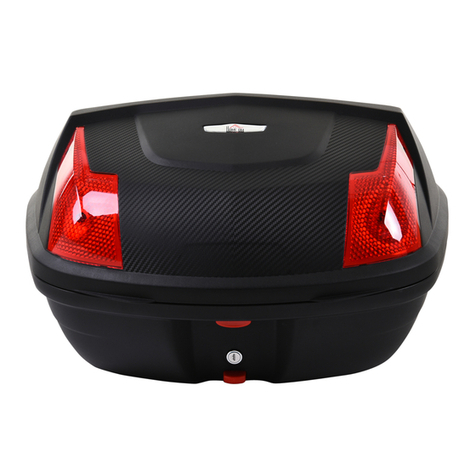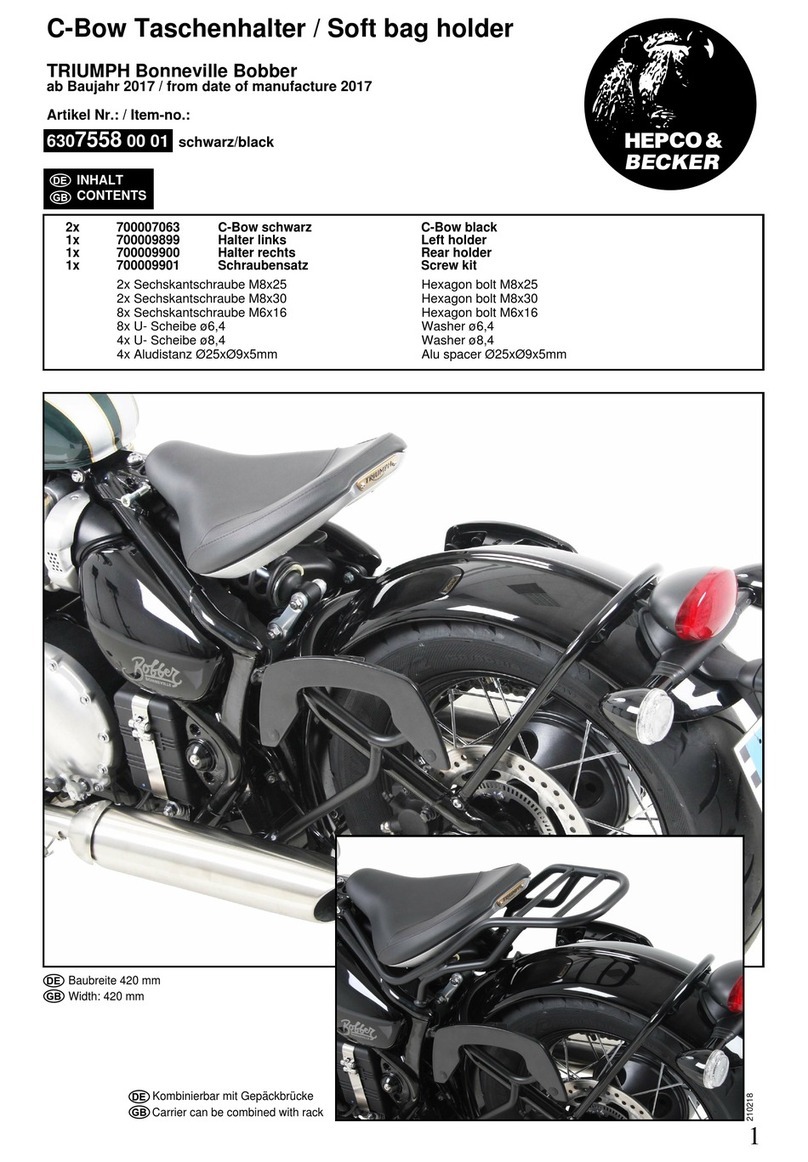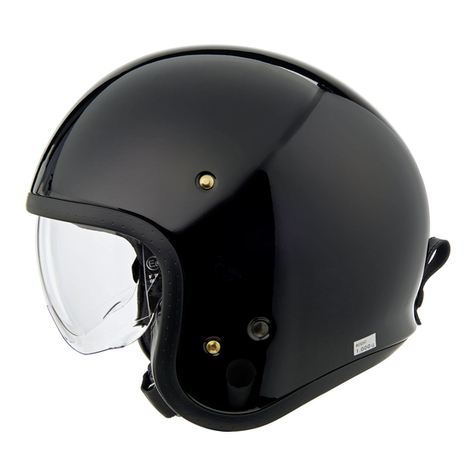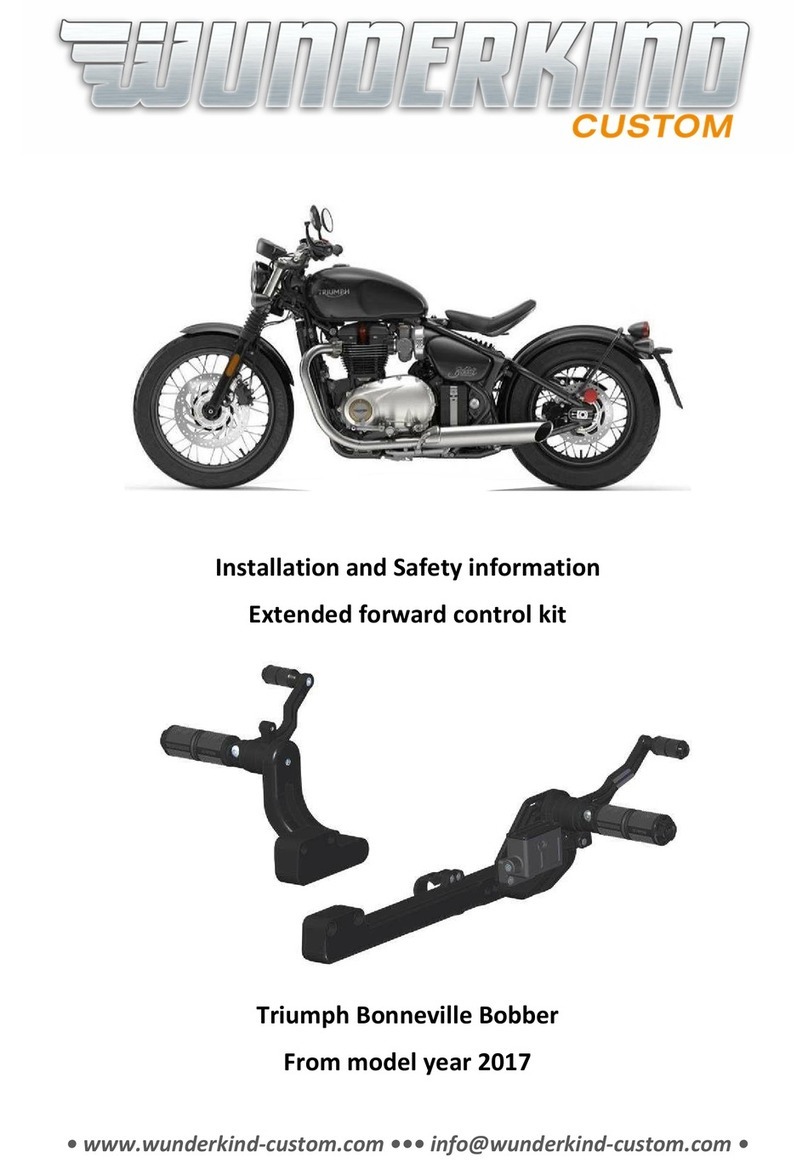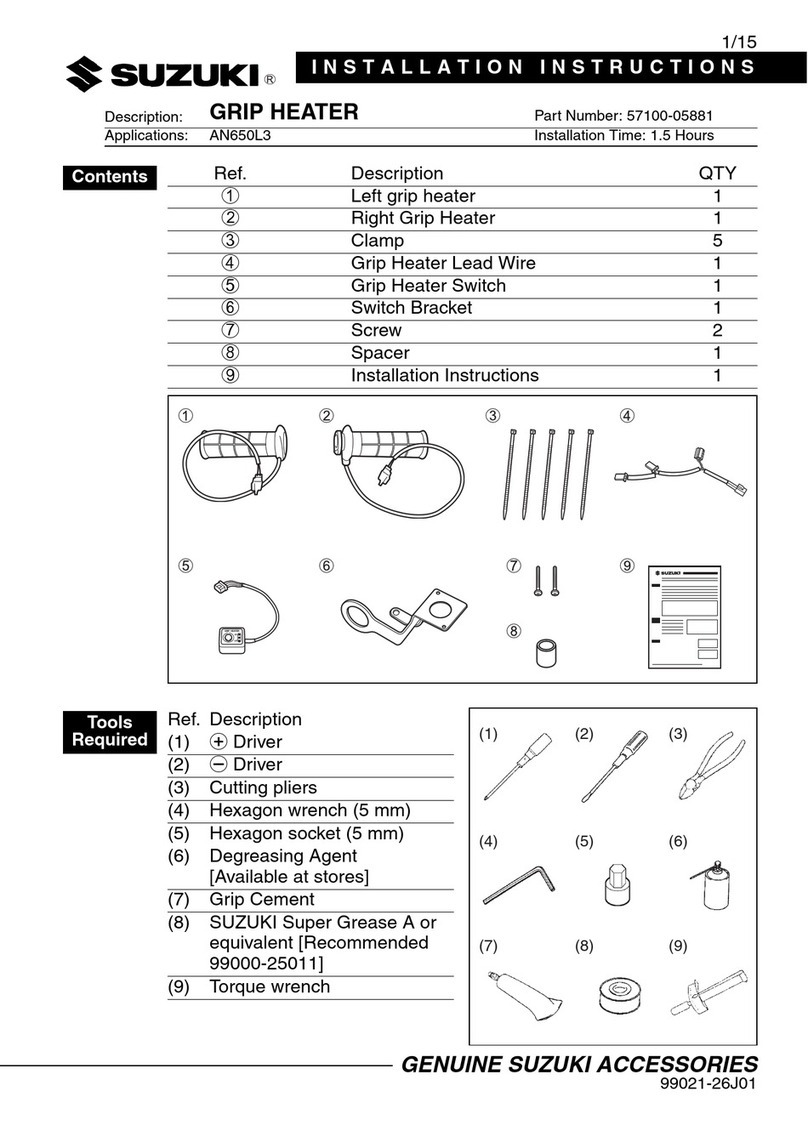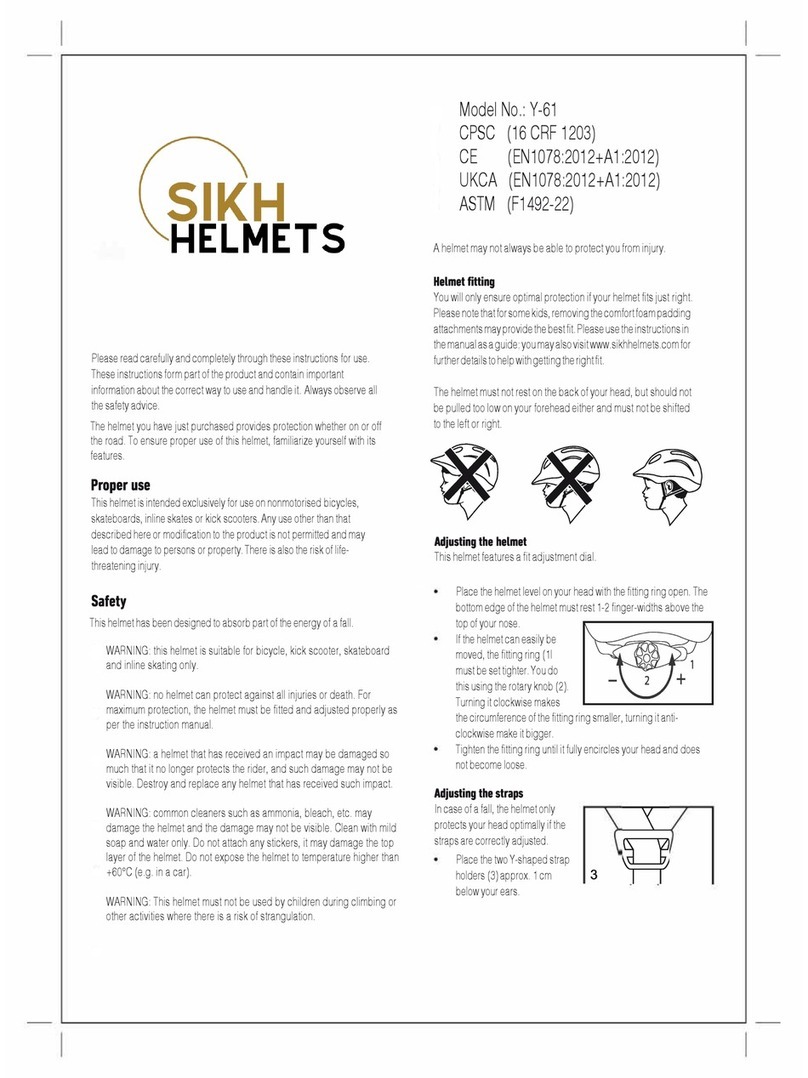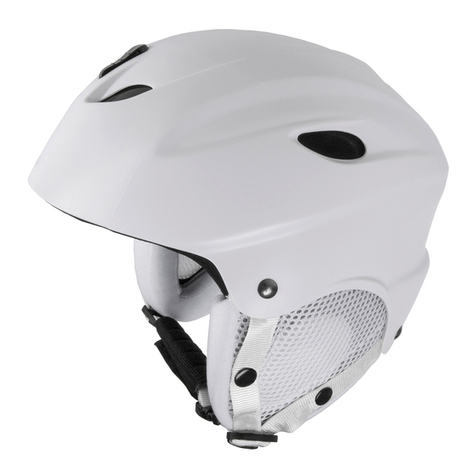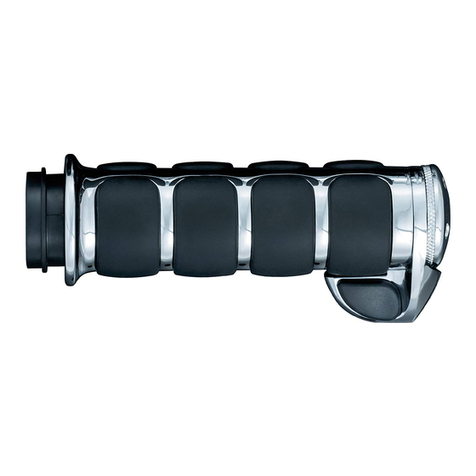
3
Electronic Jet Kit™ Instructions
General Layout Start-Up Light Sequence
Free Spirits
4
Electronic Jet Kit™ Instructions
Fax 0039 (0) 445-395539 Site: www.freespirits.it
Final Installation
• After connecting the box, check all wire connections to ensure proper connection.
Do this by pulling on the connection to make sure the connectors are properly locked in.
• Be sure to check the wire harnesses are not in direct contact with any sharp edges, exhaust and/or other
objects, which could result in long term wear and/or damage.
• To program your controller the bike must be running.
• Always make sure your bike is at normal operating temperature when making tuning adjustments
CONTROLLER FUNCTIONALITY
• The TFI controller can be adjusted “on the fly” to tune your vehicle. No computer or other external device
is needed to make tuning adjustments. All that is required is for your vehicle to be running which provides
power to the TFI controller.
All TFI controllers come pre-programmed to the recommended base light settings which represents a
typical stage 1 (air filter + exhaust) vehicle modification.
It is recommended to Install the TFI controller and take a test ride first before making any mode adjust-
ments.
• If at anytime you stay in an adjusting mode for longer than 4 seconds without pressing any buttons, the
controller will exit adjusting mode and will return to the ready state.
• Start the bike up, the lights inside the module will energize and become visible.
With a proper installation, the module will have a continuous lighting sequence where green lights come
on from left to right and then back again.(Page 4) Sequence repeats until the bike is fully warmed up.
It will then stop scrolling the lights and go to a steady green light to the far left.
If the number 1 LED is flashing green and the number 8 LED is flashing red at indicates a connection issue.
Re-check the wires from the TFI and make sure they are connected to the proper wire of your bike’s stock
harness. The TFI unit only needs power and a proper ground to show this error display. to start then you
will also need to recheck the wiring. If you have not connected the ground wire to the negative post of the
battery then make sure you have attached the wire to a proper grounding source on the frame.
(The flashing green and flashing red lights is common for a proper installation during deceleration because
the stock fuel map shuts off the fuel injectors during this process.)
• At this point you are ready to adjust the module to the base settings supplied with the unit.
The unit comes with pre-programmed base settings which should
match the recommended starting settings on pag. 7.
Checking that the six programmable features are available.
Six modes are available to make adjustments. You enter the adjustment mode by pressing the MODE
button. Correctly entering the adjustment mode will display flashing LEDs on the LED display.
Pressing the MODE button repetitively will move you through all the modes.
Take note that the MODE button is sensitive and will at times skip a mode.
Pressing the MODE button at the last mode will bring you back to the first mode.
If each mode is present then the proper code exists and you are ready for making manual adjustments.
See the first (page 4,5,6).
If you failed to enter a mode, try going through the sequence again and be sure to only press the MODE
button once for step.
To exit the adjustment mode and return to operation mode you just wait several seconds until the LED
display reverts back to solid LED colors.
It is recommended to Install the TFI controller and take a test ride first before making any mode adjust-
ments
CONTROLLER FUNCTIONALITY (Continued)
• You are now ready to manually program each mode. Consult the base settings supplied with the
unit or you can look up the most up-to-date settings by going to www.dobeckperformance.com. or
www.electronicjetkit.com.
The six modes available are distinguished by an LED color combination. The six modes in respective
order are as follows: GREEN, YELLOW, RED, Green-Blue, Yellow-Blue and Red-Blue.
All six modes have 15 possible light settings. The settings are adjusted by pressing the PLUS (+) and
MINUS (-) buttons.
For easy reference the LEDs are numbered 1 through 8.
However, the LEDs can be adjusted to the following positions: 0.5, 1, 1.5, 2, 2.5, 3, 3.5, 4, 4.5, 5, 5.5, 6,
6.5, 7, 7.5, 8.
For example, in a particular mode, if LED 4 is flashing then the LED display is set to 4 in that mode.
If the PLUS (+) button is pressed once then LEDs 4 and 5 will flash simultaneously and the LED display is
set to 4.5.
If the PLUS (+) button is pressed once again, only LED 5 will flash and the LED display is set to 5.
The LED display can also be set to 0.5 by pressing the MINUS (-) button and scrolling the colored LED to
position 1 and then pressing the (-) button once more until the LED in position 1 is flashing twice as fast
as normal.
Modes 4, 5, and 6 are distinguished by the 8th LED also blinking blue.
• Every mode represents an adjustable feature within your vehicle’s drive cycle.
Reference the Example Drive Cycle diagram to gain a visual understanding (Page 6).
Each mode can be defined as either a FUELING mode GREEN/YELLOW/RED (Modify the fuel amount
levels.)
or a SWITCH POINT mode Green-Blue/Yellow-Blue/Red-Blue (Determine the transition point between two
corresponding zones.)
The higher the light setting the longer it takes for a zone to engage.
The lower the light setting the faster a zone will engage.
Note: Switch point modes do not have to be adjusted that frequently.
• Your module should now be properly programmed and you are now ready to tune your bike.
Always make sure your bike is at normal operating temperature when making tuning adjustments.
